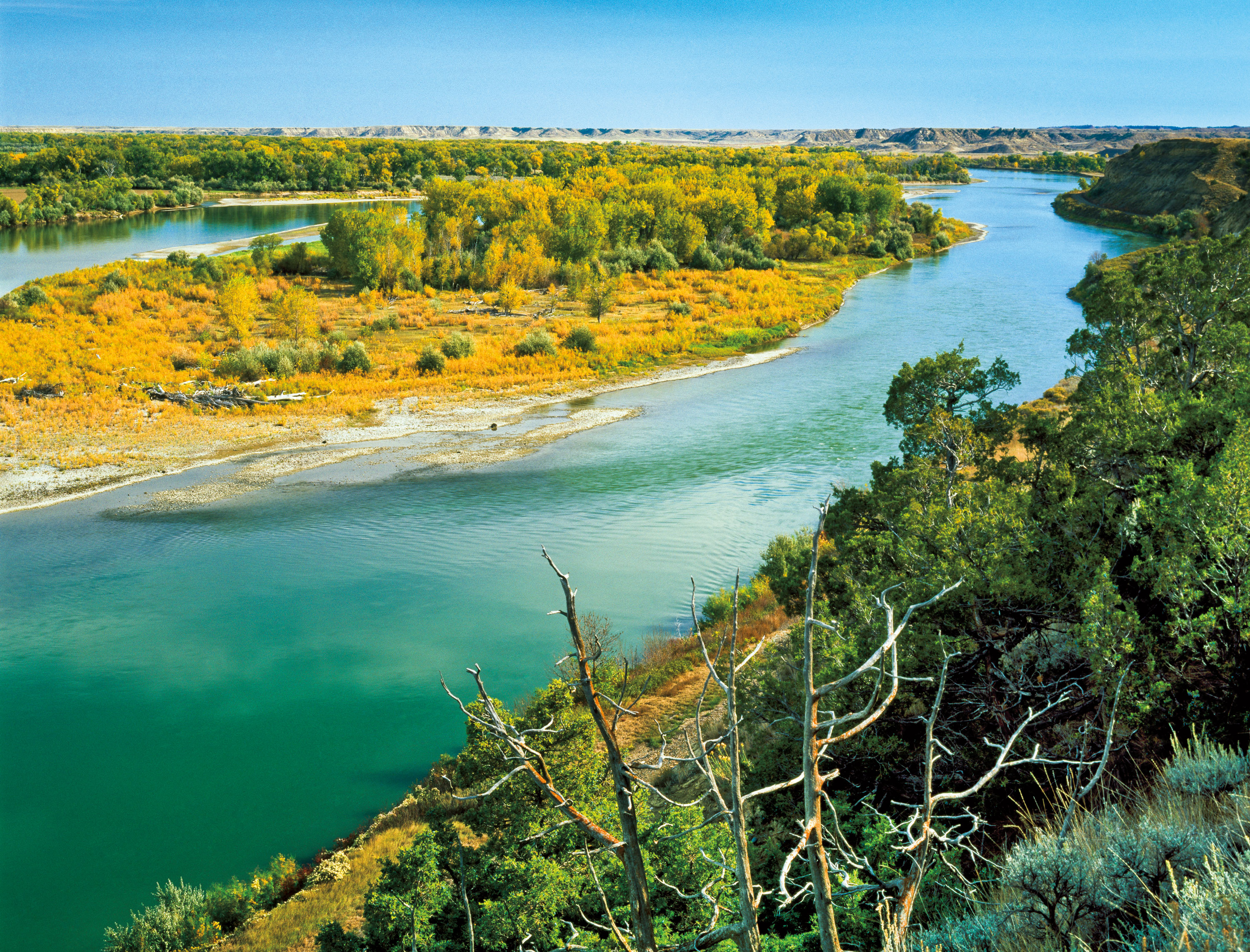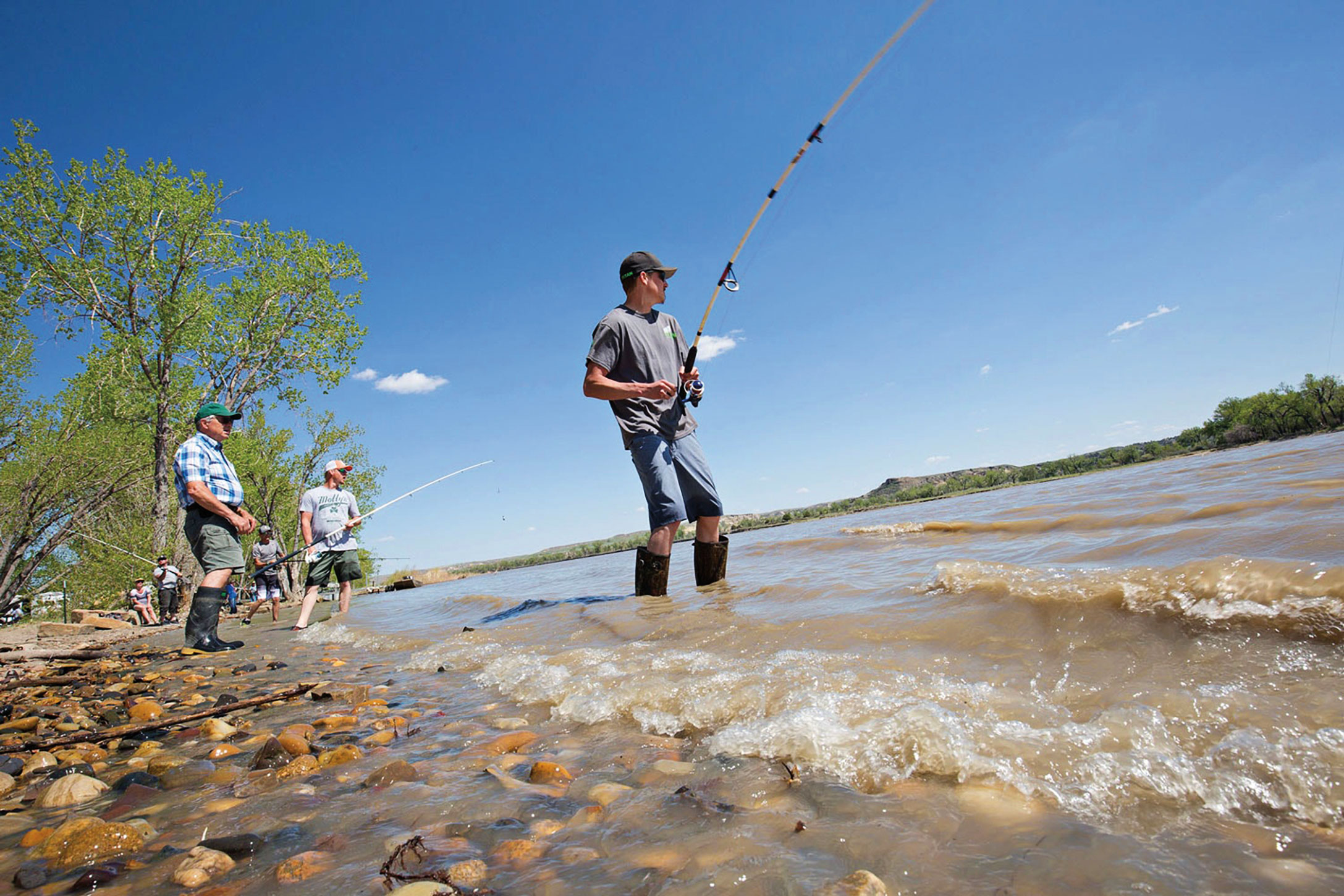




Montana’s longest free-flowing river glides past scenic sandstone bluffs, towering cottonwoods, rugged badlands, and vast stretches of prairie little changed from when Lieutenant William Clark and his party traveled here more than two centuries ago.
Seeing the lower Yellowstone’s abundant opportunities, the Montana Legislature recently invested millions of dollars in increasing and improving access, recreation and educational opportunities, and habitat conservation along this river corridor.
The scale and scope of the lower Yellowstone River requires a close attention to details for floaters. River access points are less abundant than on other rivers in Montana, and in some cases a recreationist may need to travel many miles on the river before basic services might be available. With limited emergency or rescue services available this guide is aimed at helping visitors know how to plan, where to access services, and how to stay safe, all while helping to protect this valuable resource.
Lower Yellowstone River Guide - this guide includes over 30 maps and helpful tips on points of interest as well as important considerations for recreating responsibly while staying safe
Fishing: Catch rates for smallmouth bass, sauger, northern pike, walleye, shovelnose sturgeon, and channel catfish are good when water conditions are conducive
Wildlife watching: Opportunities for spotting deer, mink, otters, and beavers, and more
Birding: Over 100 bird species use the riparian habitats, including chattering belted kingfishers, bald eagles, and ospreys
Native American cultural sites: Some of which were home to battlefields from the Indian Wars, and world-renowned paleontology digs
Moss agate hunting: Secret spots along the banks after turbid flows unearth the coveted stones
The scale and scope of the lower Yellowstone River requires close attention to detail for floaters, and the surrounding area offers a lot to be explored, but visitors should be reminded of the following principles:
Practice “Leave No Trace” river ethics: Carry the necessary equipment to minimize your impact; practice pack in/pack out principles; and observe wildlife from a safe distance
Recreate responsibly: Plan and prepare for your time outdoors to keep yourself and others safe while helping us to maintain access to our beloved natural spaces
Respect private land along the river: Do not trespass – respect private property, ranchers’ needs for fencing, and obtain permission before camping or recreating on private land
Camping: In general, camping is allowed on all accessible public lands. In the guide, camping areas are designated on maps and marked with symbols in the text. Camping experiences range from primitive, with no services, to full campgrounds with electrical hook-ups
Fishing and the Montana Stream Access Law: Know your rights and responsibilities under the Stream Access Law
Hunting: Be sure you are aware of the hunting regulations across FWP’s sites
For more information about the area, or for specific questions about fishing, hunting, or other recreational opportunities, contact:
FWP’s Region 7 Office
352 I-94 Business Loop
Miles City
406-234-0900
fwprg72@mt.gov
